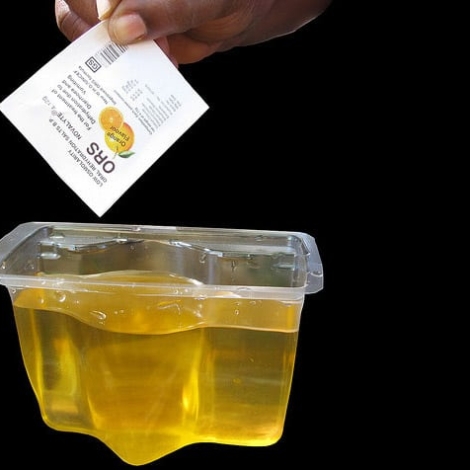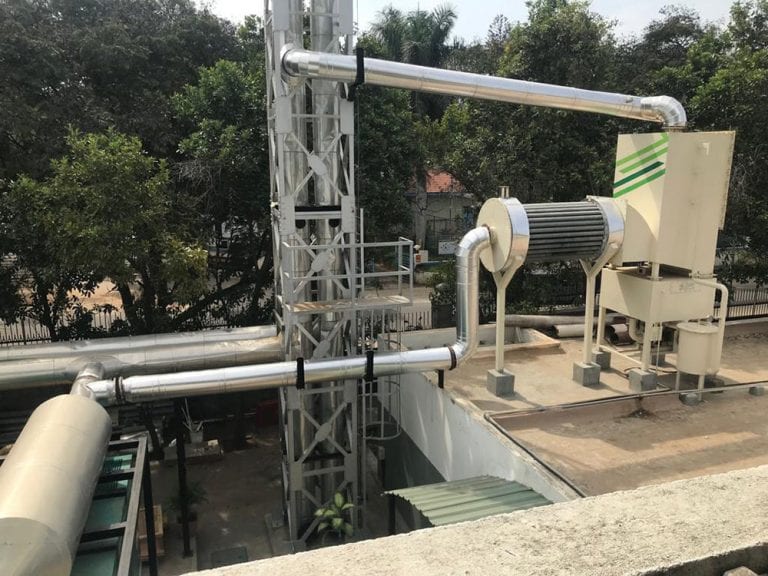Coca-Cola appears on store shelves worldwide, even in the most hard-to-reach villages in the developing world. That level of ubiquity results from an intricate delivery network. Now the soft drink company is sharing its supply-chain-building secrets with social enterprise and governments that want to make medicine as easy to find as a Coke.
Simon Berry hit on an idea that seemed brilliant on paper. Since Coca-Cola manages to find its way to store shelves in remote Sub-Saharan African villages and hard-to-reach communities worldwide, why not create life-saving drug packages that can hitch along for the ride? Berry founded Cola Life to produce Kit Yamoyo, an anti-diarrhea kit with oral rehydration solution, zinc tablets and soap in packages that fit between the Coke bottles in a crate.
While sharing its crates, Coca-Cola also shared its knowledge of supply chains. Cola Life began a year-long test of the kits in Zambia and sold more than 20,000 to retailers in the first six months. But only a few of those shipped on Coke crates.
“In the end, using the space in the crates was not the key enabler we thought it would be. It was the space in the market, not the space in the crates, that was important,” Berry told E4C.

Kit Yamoyo packages are designed to fit between Coke bottles in a crate and they double as cups for mixing the diarrhea-fighting oral rehydration solution packets that they contain. Photo courtesy of Cola Life
Coke’s advisors had asked Berry about his “value chain,” a term that he hadn’t properly understood at first. Over time, he learned that the softdrink company’s distribution secret was, to put it simply, money. Or, more abstractly, motivation. And money motivates. From manufacture to sale, nearly every hand that a bottle of Coke passes through belongs to somebody who gets paid for doing the job right. Each link in the supply chain is motivated to keep the whole thing running smoothly.
That basic insight, along with other technical advice, were Coca-Cola’s gift to Cola Life. Kit Yamoyo sold to consumers for about $1, a price that includes a 35 percent margin for the retailer, 20 percent for the wholesaler and 5 percent for the manufacturer. Everybody is paid and motivated all along the supply chain and the kits go out even to the hard-to-reach stores in rural communities.
Cola Life is just one of the medical operations that Coca-Cola has enhanced. Drawing from its well of experience with distribution in developing countries, Coca-Cola is training people in non-profit enterprise and even government agencies to use its business tactics to improve their supply chains.
Project Last Mile
For the past five years, the company has engaged with health agencies in African governments through Project Last Mile. The project is a partnership that includes the Global Fund, the Bill and Melinda Gates Foundation, Accenture Development Partnerships and, more recently, USAID. Work began Tanzania improving its medicine delivery system and has expanded to Ghana and Mozambique. By 2020 the project plans to operate in 10 African countries.

Coca-Cola Lead Cooler Technician, Maxwell Ayisi (right), and Ghana Health Service Refrigeration Technician Livingstone Modey repair a dual gas and electric cooler that stores vaccines at a clinic in Peki Dzake, Ghana. Photo courtesy of Coca-Cola
“Coca-Cola had previously attempted to leverage its extensive distribution system to improve access to medical supplies, [but] most of these attempts were associated with disaster relief as opposed to proactive, sustained partnerships,” says April Jordan, Coca-Cola’s Director of External Corporate Affairs.
At the project’s inception, the Global Fund audited Tanzania’s state-run clinics and found delivery delays. In response, the state ordered its Medical Stores Department (MSD), which procures, stores and delivers medicine, to make more deliveries. Instead of dropping off supplies at 150 district medical warehouses as its drivers had been doing, MSD was required to deliver to 5500 clinics.
For help with the logistics, MSD turned to Project Last Mile.
“Though initially unsure how a beverage company could address these challenges, the leadership team at MSD was receptive to building supply chain expertise and Project Last Mile emerged in Tanzania,” Jordan says.
MSD and its advisors made a wish list of solutions, including trucks converted to warehouses and outsourcing the “last mile” of deliveries. The department finally decided on the option that it could most easily afford, software tools to streamline delivery schedules and routes.
The work began with Excel in a system created in conjunction with consultants from Accenture Development Partnerships. The consultants trained Tanzania’s warehouse managers and gathered data on the delivery routes. Bottlers for Coca-Cola weighed in with their knowledge on driving times, road conditions and tricks for working in changing seasonal weather.
As the initiative matured, Excel was replaced with Llamasoft, geo-coded software for optimizing networks that is similar to one that Coke’s bottlers use. The result was faster deliveries and fewer expenses.
MSD has reported that drug delivery times were cut from 30 days to five, giving a 30 percent improvement in the availability of medicines throughout the country. It also reported that 90 percent fewer drugs and supplies expire in warehouses, and it saw a 64 percent improvement in forecast accuracy, which is the prediction of supplies that may be needed.
“There has been an overall shift in business culture at MSD towards more proactive, client-centered practices,” says Shirin Ahmed, the program manager at Yale Global Health Leadership Institute, part of a team that is carrying out a study of the MSD overhaul and the impact of Project Last Mile.
With the support of their advisors, MSD improved how they hire people, added new roles and trained its staff through the Supply Chain Academy, an online education system. And, similar to the value chain ethos, Coke’s advisors instilled in Simon Berry, MSD’s advisors suggested ways that the agency can motivate its staff to do their jobs better.
MSD now uses a new performance management system called DRIVE, which allows employees to set goals and earn rewards when their performance improves. The system is modeled after a similar one at Coca-Cola Kwanza to increase staff accountability, Ahmed says.
That system may serve as a stand-in for the profits that motivate people in Coca-Cola’s supply chain. Rather than earning cash for services, MSD’s employees earn rewards for job improvement. Coca-Cola’s lesson, distilled to a basic element, is that people need motivation for success.
Successes and targets for improvement
Three aspects of the project have ensured its success so far, Ahmed says. Training from Accenture Development Partnerships taught local managers to use Coca-Cola’s tools. Leaders in MSD convinced senior management to buy into the program. And Coca-Cola’s bottlers were in direct contact with their counterparts in MSD.
Two factors, on the other hand, have slowed progress and fixing them amounts to recommendations for the future, Ahmed says. One is that there was a high staff turnover in each partner organization that hampered results, and the other is that government regulations prevented MSD from incorporating some of Coca-Cola’s recommendations.
“[The] partnership should recognize differences between public and private operating environments and adapt Coca-Cola approaches accordingly,” Ahmed says.
Distribution help
For now, Coca-Cola isn’t looking to dole out advice to any more businesses or organizations, but we have expert advice to improve product distribution right here. Diana Jue and Jackie Stenson, cofounders of Essmart, have offered their expertise on pricing, packaging and marketing in developing countries.


Hi Rob,
This article is interesting to me because my most recent work involves Coca-cola and Project last mile and you mentioned some challenges from their work in Tanzania. Would like to learn more about those challenges.
please email me back so we can chat.
thanks.